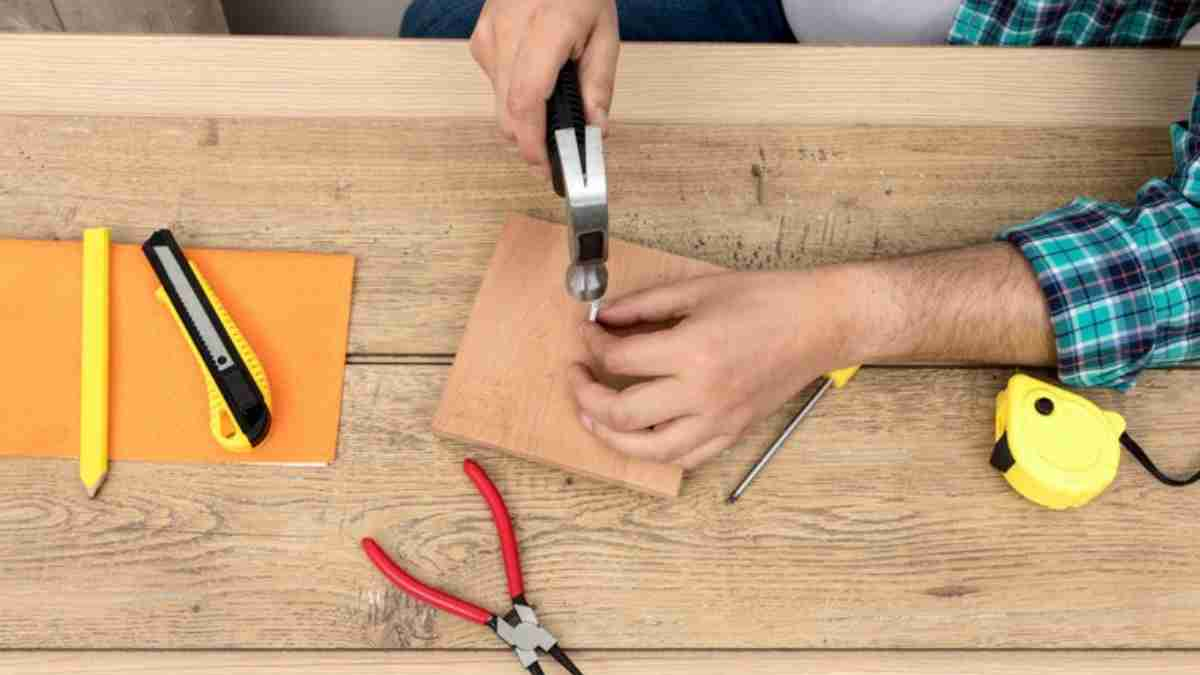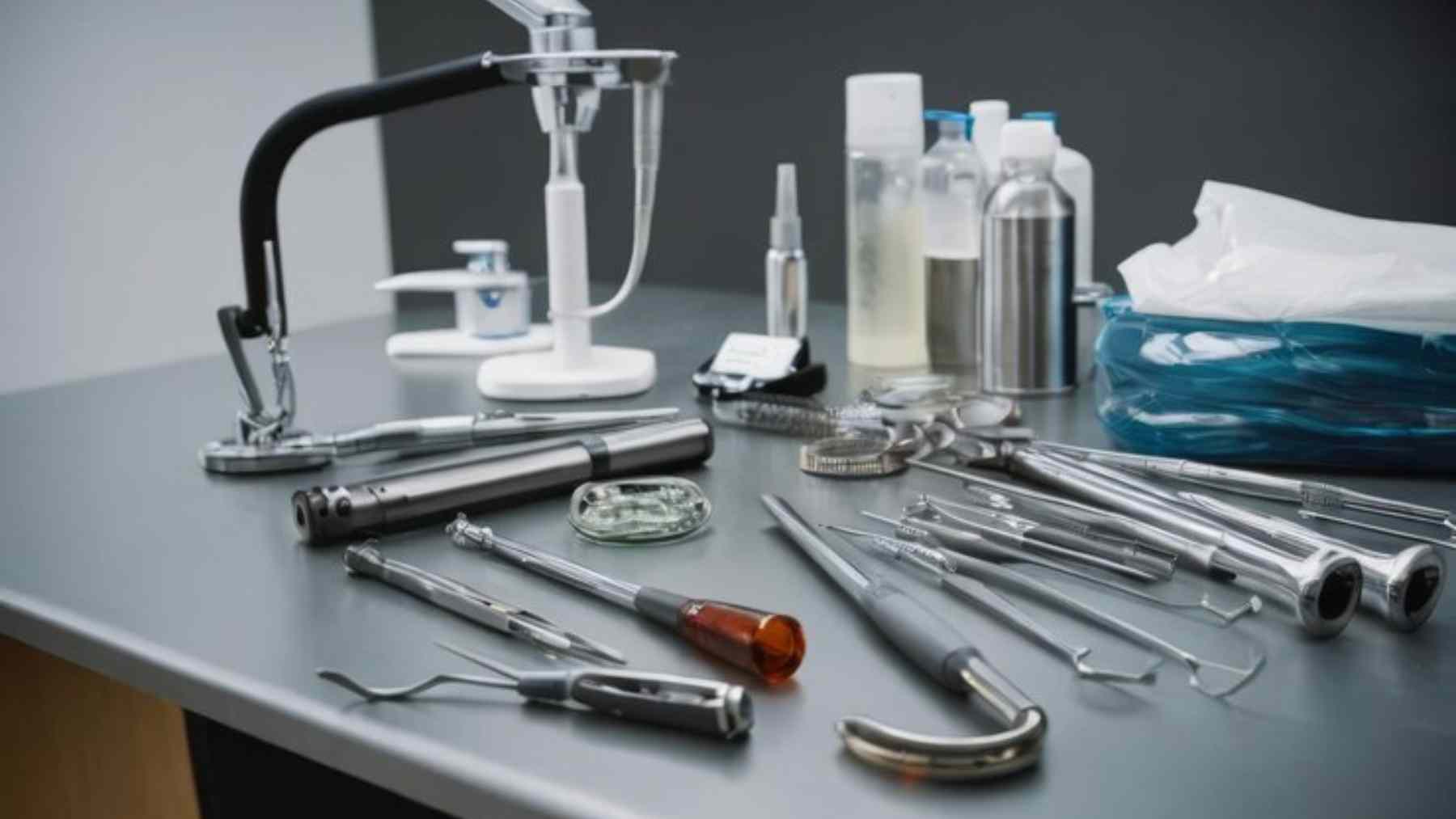News
Tyler Auto Finance: How to Secure the Best Loan for Your Next Vehicle Purchase

Looking to cruise around town in a shiny new set of wheels? Tyler Auto Finance has got you covered! But before you rev up that engine, let’s talk about how to secure the best loan for your next vehicle purchase. From understanding your credit score to negotiating like a pro, we’ve got all the insider tips you need to hit the road in style without breaking the bank. So buckle up and get ready for a smooth ride towards your dream car with Tyler Auto Finance!
Understanding Your Credit Score and How It Affects Your Loan Options
Your credit score plays a crucial role in determining the loan options available to you when purchasing a vehicle from Tyler Auto Finance. It is a reflection of your financial history and indicates to lenders how risky it may be to lend you money.
A higher credit score typically leads to more favorable loan terms, such as lower interest rates and higher borrowing limits. On the other hand, a lower credit score may result in less attractive loan offers or even potential rejection by some lenders.
Before applying for auto financing at Tyler Auto Finance, it’s essential to check your credit report for any errors that could negatively impact your score. Taking steps to improve your credit score, such as paying bills on time and reducing debt, can help you secure better loan options in the future.
Understanding how your credit score influences your loan opportunities can empower you to make informed decisions when shopping for a new vehicle at Tyler Auto Finance.
The Importance of Shopping Around for the Best Loan Rates
When it comes to securing a car loan with Tyler Auto Finance, one of the most crucial steps is shopping around for the best loan rates available. By taking the time to explore different options, you can potentially save yourself a significant amount of money in interest fees over the life of your loan.
Every lender offers different terms and rates, so comparing offers from multiple sources allows you to find the most competitive deal that fits your budget. Don’t settle for the first offer that comes your way – be proactive in seeking out better rates.
By researching and comparing various loan options, you empower yourself with valuable knowledge that can help you make an informed decision on which loan package best suits your financial needs. Remember, a little extra effort upfront can lead to substantial savings down the road.
Whether you’re buying a new or used vehicle, ensuring that you secure favorable loan terms is essential for your overall financial well-being. So, don’t underestimate the importance of shopping around for the best possible loan rates before committing to any financing agreement.
Tips for Negotiating a Better Loan Deal with Tyler Auto Finance
When it comes to negotiating a better loan deal with Tyler Auto Finance, preparation is key. Start by researching current interest rates and terms in the market to have a baseline for comparison.
Don’t be afraid to leverage your credit score as a bargaining tool. A higher score can often lead to more favorable loan terms and lower interest rates.
Be willing to negotiate not just on the interest rate, but also on other aspects of the loan such as the repayment period or any additional fees. Sometimes flexibility can make a significant difference in the overall affordability of the loan.
Remember that you are not obligated to accept the first offer presented to you. Take your time, shop around, and don’t hesitate to ask for clarification on any terms that may seem unclear.
Always stay polite and respectful during negotiations – maintaining a positive relationship with Tyler Auto Finance can potentially lead to better deals in the future.
Other Factors to Consider Before Taking Out a Car Loan from Tyler Auto Finance
When considering a car loan from Tyler Auto Finance, it’s essential to factor in any additional fees or charges that may be associated with the loan. These could include origination fees, prepayment penalties, or late payment fees. Be sure to read the fine print and understand all the terms before signing on the dotted line.
Another important factor to consider is the length of the loan term. While a longer term may result in lower monthly payments, it could end up costing you more in interest over time. On the other hand, a shorter term may mean higher monthly payments but less interest paid overall.
It’s also crucial to assess your current financial situation and determine how taking on a car loan will impact your budget. Make sure you can comfortably afford the monthly payments along with other expenses.
Additionally, think about whether you want to secure a fixed or variable interest rate for your car loan. A fixed rate provides consistency in payments, while a variable rate can fluctuate based on market conditions.
Consider how taking out a car loan may affect your credit score and overall financial health. Be mindful of not overextending yourself and ensure you have a solid plan for repayment before committing to any financing agreement.
Conclusion
So, you’ve armed yourself with knowledge about Tyler Auto Finance and how to secure the best loan for your next vehicle purchase. Understanding your credit score, shopping around for the best rates, and negotiating a better deal are all key steps in making an informed decision.
Remember that taking out a car loan is a big financial commitment, so it’s important to consider all factors before signing on the dotted line. Think about your budget, the total cost of ownership, and how much you can comfortably afford each month.
By doing your research and being proactive in seeking out the best loan options available to you, you can feel confident in your decision when it comes time to make that important purchase. Trust your instincts and make sure the terms of the loan align with what works best for your individual circumstances.
In the end, by following these tips and staying informed throughout the process, you’ll be well-prepared to drive off into the sunset in a new vehicle that meets both your needs and budget requirements.
FAQs: Tyler Auto Finance
Can I get a car loan with bad credit from Tyler Auto Finance?
Yes, Tyler Auto Finance offers options for individuals with less-than-perfect credit. It’s still possible to secure a car loan, but be prepared for higher interest rates.
How long does the car loan approval process take with Tyler Auto Finance?
The approval process can vary depending on your individual circumstances, but typically you can expect to receive a decision within a few business days.
Are there any prepayment penalties if I pay off my car loan early?
It’s essential to review the terms of your loan agreement with Tyler Auto Finance carefully as some loans may have prepayment penalties.
What documents do I need to apply for a car loan at Tyler Auto Finance?
You will likely need proof of income, identification, and potentially other documents such as utility bills or bank statements to complete your application successfully.
Is it possible to refinance my existing auto loan through Tyler Auto Finance?
Yes, refinancing an existing auto loan is an option that could potentially help you secure better terms or lower interest rates on your current vehicle finance.
News
Tensioning Tool W/ Manual Cut-Off Tie Tool with Grip

Tensioning Tool W/ Manual Cut-Off Tie Tool with Grip! Are you looking to streamline your tying and fastening processes with precision and ease? Look no further than tensioning tools! These handy devices are a game-changer when it comes to securing materials effectively. And when combined with manual cut-off tie tools featuring comfortable grips, you’ve got a winning combination that will make your projects a breeze. Let’s dive into the world of tensioning tools and discover how this tool can revolutionize your workflow.
Understanding the Importance of Manual Cut-Off Tie Tools:
When it comes to working with tie tools, having a manual cut-off feature can make all the difference. These tools are essential for quickly and efficiently cutting off excess ties after they have been tensioned. By using a manual cut-off tie tool, you can ensure that your ties are trimmed neatly and securely without the need for additional equipment.
Manual cut-off tie tools not only save time but also help in improving overall efficiency during projects. They provide precision in cutting ties, ensuring a clean finish every time. Additionally, these tools offer more control over the cutting process, allowing users to adjust based on their specific needs.
Investing in a quality manual cut-off tie tool is crucial for anyone working with ties regularly. It simplifies tasks, enhances workflow, and contributes to achieving professional results effortlessly.
The Benefits of Using a Tensioning Tool with Manual Cut-Off Functionality
When it comes to securing heavy-duty materials or bundling items together, having a tensioning tool with manual cut-off functionality can make the job much easier.
One of the key benefits of using such a tool is the precision it offers in tightening and cutting off excess tie material. This ensures a neat and secure finish without any loose ends that could pose safety hazards.
Another advantage is the efficiency gained from having both tensioning and cutting functions in one tool. This streamlines the process, saving time and effort compared to using separate tools for each task.
Additionally, these tools are versatile and can be used across various industries, from construction to agriculture, making them a valuable asset for professionals needing to secure loads or structures securely.
Investing in a tensioning tool with manual cut-off functionality can enhance workflow efficiency while ensuring reliable results in fastening applications.
Types of Grips and Their Uses in Tensioning Tools
When it comes to tensioning tools, the type of grip you choose can make a big difference in how efficiently you can work. There are different types of grips available, each designed for specific uses and preferences.
One common type is the pistol grip, which provides a comfortable and secure hold for users. This grip is ideal for applications where precision and control are important.
Another popular option is the ratchet handle grip, known for its ability to apply consistent pressure while minimizing user fatigue. This grip is often preferred for heavy-duty jobs that require sustained tensioning.
For those looking for versatility, the adjustable handle grip allows users to customize the tool to their comfort level. This feature is especially useful when working on projects that require varying levels of tension.
No matter which type of grip you choose, selecting one that feels comfortable in your hand and suits your specific needs will help improve your overall efficiency and results when using a tensioning tool with manual cut-off functionality.
Factors to Consider When Choosing a Tensioning Tool with Manual Cut-Off Functionality
When selecting a tensioning tool with manual cut-off functionality, it’s essential to consider the material you will be working with. Different tools are designed for specific types of ties and materials, so make sure to choose one that suits your needs.
Another factor to keep in mind is the size and weight of the tool. Ensure that the tool you select is comfortable to hold and easy to maneuver for extended periods of time without causing strain on your hands or wrists.
The durability and construction of the tensioning tool are also crucial factors to consider. Look for a well-built tool made from high-quality materials that can withstand frequent use without breaking or malfunctioning.
Additionally, think about the level of tension control offered by the tool. Some models provide more precise tension adjustment options than others, so choose one that allows you to achieve the desired level of tightness for your ties.
Consider any additional features or accessories that may come with the tool, such as different grip options or storage cases. These extras can enhance your overall user experience and make using the tool more convenient and efficient.
How to Properly Use a Tensioning Tool with Manual Cut-Off Feature
When using a tensioning tool with a manual cut-off feature, start by securely fastening the tie around the material you are working on. Make sure it is tight but not overly so to avoid damaging the tie or the tool.
Next, engage the tensioning mechanism of the tool slowly and steadily. This will ensure that proper tension is applied to secure your materials effectively without causing any strain on the tool itself.
Once you have achieved the desired level of tension, use the manual cut-off function carefully to trim off any excess tie material. Be precise in your cutting motion to prevent jagged edges or leftover pieces that could affect the final look and security of your work.
After cutting off the excess material, release any remaining tension from the tool before removing it from your workpiece. This will help prolong the life of both your ties and your tensioning tool for future projects.
Tips for Maintaining
Maintaining your tensioning tool with manual cut-off tie tool with grip is essential to ensure its longevity and optimal performance.
First, always clean the tool after each use to prevent dirt and debris from causing damage. Regularly lubricate moving parts to keep them running smoothly.
Inspect the tool for any signs of wear or damage, such as frayed cables or loose grips, and address these issues promptly.
Store your tensioning tool in a dry place away from moisture to prevent rusting. Avoid dropping or mishandling the tool to prevent unnecessary wear and tear.
Follow the manufacturer’s guidelines for maintenance tasks such as blade sharpening or cable replacement. By taking care of your tensioning tool properly, you can prolong its lifespan and maintain its efficiency during every use.
FAQs: Tensioning Tool W/ Manual Cut-Off Tie Tool with Grip
Can a tensioning tool with manual cut-off functionality be used for different types of ties?
Yes, most tensioning tools with manual cut-off features are versatile and can be used with various tie materials such as stainless steel, nylon, or polyester.
How often should I lubricate my tensioning tool to ensure smooth operation?
It is recommended to lubricate your tensioning tool regularly, depending on the frequency of use. A well-lubricated tool will help maintain its efficiency and prolong its lifespan.
Are there any safety precautions I need to take when using a tensioning tool with manual cut-off function?
Always wear appropriate personal protective equipment such as gloves and goggles when operating a tensioning tool. Make sure to follow the manufacturer’s instructions carefully to prevent accidents or injuries.
Can beginners use a tensioning tool with manual cut-off feature easily?
Yes, most modern tensioning tools are designed for ease of use, making them suitable for beginners. However, it is essential to familiarize yourself with the proper techniques and safety guidelines before using the tool.
How do I know if my tensioning tool needs replacement parts or maintenance?
If you notice any signs of wear and tear on your tensioning tool or experience difficulty in its operation, it may be time to replace certain components or perform maintenance tasks. Consult the user manual or contact the manufacturer for guidance on troubleshooting issues.
News
Best Tonsil Rock Removal Tool for Effective and Easy Removal

Tonsil Rock Removal Tool! Are you familiar with those pesky little tonsil stones that can wreak havoc on your throat? If so, you’re not alone! Tonsil stones, also known as tonsilloliths, are a common issue that many people face. These small, white or yellowish deposits can cause bad breath, sore throats, and discomfort. But fear not – we’ve got the scoop on the best tools for removing these bothersome tonsil rocks effectively and easily. Say goodbye to those irritating tonsil stones once and for all!
Tonsil Rock Removal Tool: What are Tonsil Stones?
Tonsil stones, also known as tonsilloliths, are small calcified deposits that form on the tonsils. These stones can vary in size and color, often appearing as white or yellowish bumps. They are caused by a buildup of mucus, bacteria, dead cells, and food particles in the crevices of the tonsils.
When these substances get trapped and harden, they form these annoying little stones that can cause discomfort and bad breath. Tonsil stones are not typically dangerous but can be quite bothersome for those who experience them regularly.
Some people may have larger or more frequent tonsil stones due to factors like poor oral hygiene, chronic sinus issues, or large tonsil craters where debris accumulates easily. It’s essential to address tonsil stones promptly to prevent further irritation and complications in the throat.
Symptoms and Causes of Tonsil Stones
Tonsil stones, also known as tonsilloliths, are small, hard formations that develop in the crevices of the tonsils. These stones are made up of bacteria, dead cells, and mucus that can calcify over time.
One common symptom of tonsil stones is bad breath or halitosis. This occurs when the materials trapped in the tonsils start to release a foul odor. Additionally, individuals with tonsil stones may experience throat discomfort or soreness.
Causes of these pesky little stones can vary. Poor oral hygiene can lead to an accumulation of debris in the tonsils, which contributes to their formation. Chronic inflammation of the tonsils can also create an environment conducive to developing tonsil stones.
It’s essential to be aware of these symptoms and causes so you can take appropriate steps for removal and prevention.
Tonsil Rock Removal Tool: Different Methods of Removing Tonsil Stones
Tonsil stones, also known as tonsilloliths, can be bothersome and uncomfortable. When it comes to removing them, there are several methods you can try. One common method is using a cotton swab or clean finger to gently push the tonsil stone out of its pocket in the tonsil. Be careful not to trigger your gag reflex while attempting this method.
Another approach is gargling with salt water or non-alcoholic mouthwash to help dislodge the stones. The salt water solution can also reduce inflammation and kill bacteria in the throat area.
For those looking for a more advanced technique, using an oral irrigator or Waterpik with a low-pressure setting can help flush out stubborn tonsil stones effectively. This method works by directing a stream of water at the tonsils to dislodge and remove the stones.
In some cases, medical professionals may recommend laser treatment or surgical removal for severe or recurring tonsil stones that do not respond to other methods. These procedures should only be performed by trained healthcare providers in a controlled environment.
It’s essential to explore different removal methods and find what works best for you based on the size and location of your tonsil stones. Remember always to prioritize gentle techniques that minimize discomfort during removal attempts.
Top 5 Best Tonsil Rock Removal Tool
Are you tired of dealing with pesky tonsil stones that just won’t budge? Say goodbye to the frustration and hello to effective removal tools! Here are the top 5 best tools for banishing those stubborn tonsil rocks.
- Water Flosser A water flosser is a gentle yet powerful tool that can help dislodge tonsil stones with ease. Its pulsating water stream reaches deep into the crevices of your tonsils, flushing out any debris.
- Cotton Swabs: Simple yet effective, cotton swabs can be used to gently push or scrape away smaller tonsil stones. Just be careful not to apply too much pressure to avoid irritating your throat.
- Oral Irrigator: An oral irrigator, also known as a dental water jet, uses a targeted stream of water to remove debris from your tonsils without causing discomfort.
- Tonsil Stone Removal Tool Kit: These kits usually contain various tools like picks and loops designed specifically for removing tonsil stones safely and effectively.
- Salt Water Gargle: Sometimes all it takes is a simple salt water gargle to loosen and dislodge small tonsil stones naturally at home.
How to Properly Use Each Tonsil Rock Removal Tool
Once you have chosen the right tonsil stone removal tool for your needs, it’s important to understand how to properly use each one. For a water flosser, start by selecting a low-pressure setting and directing the stream towards the tonsil pockets. Gently flush out any visible stones while being cautious not to cause discomfort.
When using a cotton swab or oral irrigator, moisten them before carefully applying pressure around the tonsils to dislodge and remove the stones. A clean finger can also be effective in gently pressing on the tonsils to release stubborn stones.
For a curved syringe or medical dropper, fill it with warm salt water and point it towards the crevices where stones are lodged. Squeeze gently to flush out debris without causing irritation.
Remember, always proceed with caution and seek professional help if you encounter any complications during the removal process.
Precautions and Safety Measures
When it comes to removing tonsil stones, taking precautions and following safety measures is crucial to avoid any complications. Before using any tool for tonsil stone removal, ensure that the tool is clean and sterilized properly. This helps prevent introducing bacteria into your mouth and throat.
It’s essential to be gentle when attempting to dislodge tonsil stones to avoid causing irritation or injury to the sensitive tissues in the throat. Avoid using excessive force or sharp objects that can damage the tonsils or surrounding areas.
If you experience persistent pain, bleeding, or difficulty removing a tonsil stone, it’s advisable to seek medical advice from a healthcare professional. They can provide guidance on safe and effective methods for dealing with stubborn tonsil stones without risking harm.
Remember to wash your hands thoroughly before and after performing any tonsil stone removal procedure. Maintaining good hand hygiene reduces the risk of introducing harmful bacteria into your mouth during the process.
Prioritizing caution and safety when dealing with tonsil stones ensures a smooth and successful removal process while minimizing potential risks.
Conclusion
When it comes to finding the right Tonsil Rock Removal Tool , it’s essential to consider your comfort level and preferences. Each person may have different needs and preferences when it comes to tonsil stone removal tools.
It’s crucial to explore different options and see which one works best for you. Some people prefer a gentle approach with tools like cotton swabs or water flossers, while others may opt for more specialized tools like oral irrigators or curved syringes.
Don’t be afraid to try out different tools until you find the one that suits you best. Experimenting with various methods can help you determine what is most effective and comfortable for your specific situation.
Remember, the key is patience and persistence when dealing with tonsil stones. Finding the right tool that fits your needs can make the process of removal much easier and more efficient in the long run.
So, take your time exploring the options available and don’t hesitate to seek advice from healthcare professionals if needed. With some trial and error, you’ll eventually discover the perfect tool for effectively removing tonsil stones at home.
FAQs: Tonsil Rock Removal Tool
What are Tonsil Stones?
Tonsil stones, also known as tonsilloliths, are small, white or yellowish lumps that form on the tonsils when debris like dead cells, mucus, and food particles get trapped and calcify.
What are the symptoms and Causes of Tonsil Stones?
Symptoms of tonsil stones can include bad breath, sore throat, difficulty swallowing, ear pain, and visible white spots on the tonsils. The main causes are poor oral hygiene and chronic inflammation in the tonsils.
What are the different Methods of Removing Tonsil Stones?
Various methods can be used to remove tonsil stones such as gargling with salt water, using cotton swabs or water flossers to dislodge them manually or opting for medical procedures like laser treatment or surgical removal.
News
Top 5 Tonsil Stone Removal Tool You Need in Your Medicine Cabinet

Are pesky tonsil stones causing you discomfort and bad breath? You’re not alone! These small, smelly deposits that form in the crevices of your tonsils can be a nuisance. But fear not, with the right tools on hand, you can effectively tackle this common issue from the comfort of your own home. In this blog post, we’ll explore the top 5 tonsil stone removal tools that deserve a spot in your medicine cabinet. Say goodbye to those bothersome tonsil stones once and for all!
Why It’s Important to Have the Right Tonsil Stone Removal Tool
Imagine trying to build a house without the proper tools – it would be nearly impossible. The same goes for removing tonsil stones; having the right tools is essential for effective removal. Tonsil stones can be stubborn and hard to reach, making it crucial to have specialized tools designed for this specific task.
Using makeshift or inappropriate tools can lead to injury or ineffective removal of tonsil stones. By investing in the right tools, you ensure a safer and more successful removal process. These tools are specifically crafted to gently dislodge and extract tonsil stones without causing harm or discomfort.
Having the correct instruments at your disposal not only makes the process easier but also increases the likelihood of completely eliminating tonsil stones. Don’t underestimate how important it is to have these tools readily available when dealing with pesky tonsil stones!
The Top 5 Tonsil Stone Removal Tool
If you’re dealing with stubborn tonsil stones, having the right tools can make all the difference in effectively removing them. Here are the top 5 tonsil stone removal tools that you should consider adding to your medicine cabinet:
First up is the tongue scraper. This handy tool not only helps freshen your breath but also aids in dislodging tonsil stones from the crevices of your tonsils.
Next on the list is a water flosser. Its gentle yet powerful stream of water can help flush out those pesky tonsil stones without causing any harm to your delicate throat tissues.
Cotton swabs or Q-tips are another useful tool for gently pushing out small tonsil stones that may be lurking in hard-to-reach areas.
An oral irrigator, commonly known as a Waterpik, can also be an effective tool for removing tonsil stones by directing a concentrated stream of water at them.
Last but not least, an ear curette – a small scoop-shaped instrument – can be used carefully to gently scoop out larger or embedded tonsil stones with precision and ease.
· Tongue Scraper
Tongue scrapers are not just for freshening your breath; they can also be a useful tool in removing tonsil stones. These handy devices come in various shapes and sizes, but the key is to find one that is comfortable to use and effectively removes debris from the surface of your tongue.
When using a tongue scraper for tonsil stones, gently glide it over the back of your tongue where the stones tend to accumulate. Be careful not to apply too much pressure as you don’t want to cause any irritation or discomfort.
The scraping motion helps dislodge and remove any trapped particles or bacteria that contribute to the formation of tonsil stones. After each use, make sure to clean the tongue scraper thoroughly with warm water and soap to prevent bacterial buildup.
Incorporating a tongue scraper into your oral hygiene routine can aid in preventing tonsil stone formation by keeping bacteria at bay on the surface of your tongue. So, next time you brush your teeth, don’t forget about this little tool’s big impact!
· Water Flosser
Are you tired of trying to reach those stubborn tonsil stones at the back of your throat? Look no further than a water flosser to help blast away those pesky little nuisances. This handy tool uses pressurized water to effectively dislodge and rinse out tonsil stones without causing any harm.
Water flossers are easy to use and can be adjusted for different pressure settings, making them suitable for even the most sensitive individuals. The gentle stream of water not only helps remove tonsil stones but also promotes better oral hygiene by flushing out bacteria and debris from hard-to-reach areas in your mouth.
Say goodbye to poking around with cotton swabs or risking injury with sharp tools – a water flosser offers a safe and efficient way to keep your tonsils clear and free from buildup. Plus, its versatility extends beyond just removing tonsil stones; it’s great for overall dental care too!
Investing in a quality water flosser is like having a mini power washer for your mouth, ensuring that you can tackle tonsil stones effectively and maintain optimal oral health effortlessly.
- Cotton Swabs or Q-Tips
When it comes to removing tonsil stones, sometimes the simplest tools can be the most effective. Cotton swabs or Q-tips are handy for dislodging smaller tonsil stones that may be hiding in the nooks and crannies of your tonsils.
To use a cotton swab effectively, gently press on the area where you suspect a tonsil stone is located and carefully maneuver the swab around to help loosen and remove it. Be cautious not to push too hard as this could cause irritation or injury to your delicate throat tissues.
Cotton swabs are best suited for small or visible tonsil stones that are close to the surface. For deeper-set or larger stones, consider using other tools like an oral irrigator or ear curette for more precision in removal.
Remember to always clean and disinfect your cotton swabs before each use to prevent introducing bacteria into your mouth. Additionally, rinse your mouth thoroughly after removing a tonsil stone with a cotton swab to ensure all debris is cleared away completely.
1. Oral Irrigator
Looking for a quick and efficient way to tackle those stubborn tonsil stones? Look no further than the oral irrigator. This handy tool uses a targeted stream of water to flush out debris, bacteria, and yes, those pesky tonsil stones hiding in the nooks and crannies of your tonsils.
The gentle yet powerful water pressure helps dislodge and remove even the most stubborn stones without causing discomfort or irritation. Simply aim the tip at the pockets where the tonsil stones are lodged and let the pulsating water do its magic.
With adjustable pressure settings, you can customize your experience based on your comfort level and sensitivity. Plus, many models come with different nozzle attachments for added versatility.
Say goodbye to poking around with cotton swabs or risking gag reflexes – an oral irrigator offers a more effective and hygienic solution for removing tonsil stones quickly and easily.
· Ear Curette
Let’s talk about the Ear Curette, a handy tool for removing tonsil stones located deep within the crevices of your tonsils. This small, spoon-shaped instrument is designed to gently scoop out stubborn stones that are hard to reach with other tools.
Using an ear curette requires precision and patience. Start by carefully inserting the looped end around the stone, being cautious not to cause any discomfort or injury. Gently scrape along the surface of the tonsil until you dislodge the stone from its hiding spot.
The Ear Curette is especially useful for those persistent or larger tonsil stones that just won’t budge with simpler methods like gargling or using a tongue scraper. Its curved design allows for more targeted removal without harming your delicate throat tissues.
Remember to sanitize your ear curette before and after each use to prevent any potential infections or cross-contamination. With proper technique and care, this tool can be an effective addition to your arsenal in combating pesky tonsil stones.
How to Use Each Tonsil Stone Removal Tool Effectively
When it comes to removing tonsil stones effectively, using the right tools in the correct manner is crucial. Let’s dive into how you can make the most out of each tool:
Tongue Scraper: Gently scrape your tongue from back to front to dislodge any visible tonsil stones. Be careful not to apply too much pressure to avoid irritation.
Water Flosser: Adjust the water pressure settings and aim the nozzle towards your tonsils at a 45-degree angle. The pulsating water can help flush out smaller debris.
Cotton Swabs or Q-Tips: Moisten the swab with water and carefully push on the base of a tonsil stone to nudge it out. Avoid pushing too hard to prevent injury.
Oral Irrigator: Fill the reservoir with warm saltwater solution and irrigate around your tonsils on a low-pressure setting for gentle cleansing.
Ear Curette: Use the looped end of the curette to gently scoop out visible tonsil stones without causing discomfort.
Mastering these techniques will help you effectively remove pesky tonsil stones for fresher breath and improved oral health!
Other Tips for Removing Tonsil Stones
When it comes to removing tonsil stones, there are a few additional tips that can help make the process more effective. One helpful tip is to stay hydrated by drinking plenty of water throughout the day. This can help flush out bacteria and debris that contribute to the formation of tonsil stones.
Gargling with salt water or mouthwash can also be beneficial in loosening and dislodging tonsil stones. The gentle pressure from gargling can help push out smaller stones for easier removal. Additionally, maintaining good oral hygiene by brushing your teeth and tongue regularly can prevent the buildup of bacteria and food particles that lead to tonsil stone formation.
If you have chronic issues with tonsil stones, consider discussing treatment options with a healthcare professional. In some cases, they may recommend procedures such as laser cryptolysis or tonsillectomy to address recurring or severe cases of tonsil stones.
Experimenting with different tools and techniques for removing tonsil stones can help you find what works best for you. Remember to be gentle when trying to dislodge them and avoid using excessive force, which could cause irritation or injury to your throat.
Tonsil Stone Removal Tool: Prevention of Tons
Tonsil stones can be a bothersome issue for many people, causing bad breath and discomfort. While it’s essential to have the right tools for removing them, prevention is key to keeping them at bay. One way to prevent tonsil stones is by practicing good oral hygiene. This includes brushing your teeth twice a day and using mouthwash regularly.
Another preventive measure is staying hydrated by drinking plenty of water throughout the day. Adequate hydration helps flush out bacteria and food particles that can contribute to the formation of tonsil stones. Additionally, maintaining a balanced diet rich in fruits and vegetables can help prevent the buildup of debris in the tonsils.
Avoiding smoking and excessive alcohol consumption can also reduce your risk of developing tonsil stones. These habits not only impact your overall health but can also contribute to the formation of these pesky little masses in your throat.
By taking proactive steps to care for your oral health and making lifestyle choices that support healthy habits, you can significantly decrease the likelihood of experiencing tonsil stones in the future.
Conclusion
After exploring the essential tools for removing tonsil stones and learning how to use them effectively, you are now equipped with the knowledge to tackle this common issue. By having the right tools in your medicine cabinet, you can easily manage and prevent tonsil stones from causing discomfort or bad breath.
Remember that consistency is key when it comes to maintaining good oral hygiene and preventing tonsil stones. Incorporating regular tongue scraping, water flossing, and oral irrigation into your daily routine can help keep those pesky stones at bay.
In addition to using specialized tools, staying hydrated and practicing good oral hygiene habits such as brushing twice a day and visiting your dentist regularly can also contribute to overall oral health.
By being proactive about caring for your mouth and having the necessary tools on hand, you can ensure that tonsil stones don’t interfere with your quality of life. Stay informed, stay prepared, and say goodbye to troublesome tonsil stones!
FAQs: Tonsil Stone Removal Tool
What are tonsil stones, and why do they form?
Tonsil stones, also known as tonsilloliths, are small white or yellowish formations that develop in the crevices of the tonsils. They are caused by a buildup of food particles, bacteria, and debris that get trapped in the tonsil crypts.
Are tonsil stones harmful to your health?
Tonsil stones themselves are not usually harmful but can cause bad breath, sore throat, and discomfort. In rare cases, large or recurrent tonsil stones may lead to more severe issues like chronic tonsillitis or infection.
Can I prevent the formation of tonsil stones?
While it’s not always possible to prevent them entirely, practicing good oral hygiene such as regular brushing and flossing can help reduce their occurrence. Drinking plenty of water and avoiding smoking can also aid in preventing their formation.
How often should I use these tools for removing tonsil stones?
The frequency of using tonal stone removal tools depends on individual needs and preferences. Some people may need to use them daily if they have recurring issues with tonsil stone formation while others may only require occasional removal.
When should I see a doctor about my tonsil stones?
If you experience persistent symptoms like severe pain or difficulty swallowing due to yourtonsilstonesor if you’re unableto remove them effectively at home despite using various tools,t it’s advisableto consultanent an ENT specialistfor further evaluationand treatment options.
-

 Entertainment2 months ago
Entertainment2 months agoFutbolear: The Fusion of Football and Lifestyle
-

 Pets9 months ago
Pets9 months agoChihuahua Plays Dead: A Comprehensive Guide
-

 Finance9 months ago
Finance9 months agoHow to Buy Ethereum on eToro: A Comprehensive Guide
-

 News1 week ago
News1 week agoHow to Watch the World Cup for Free: A Comprehensive Guide
-

 Fashion3 months ago
Fashion3 months agoHeatless Curls: Effortless Waves Without the Damage
-

 Pets4 months ago
Pets4 months ago10 Essential Tips for Taking Care of a Fat Chihuahua
-

 Fashion3 months ago
Fashion3 months agoKiddies Braid Hairstyles: A Complete Guide
-

 Entertainment7 months ago
Entertainment7 months agoSeal Team Season 7: An Action-Packed Journey
